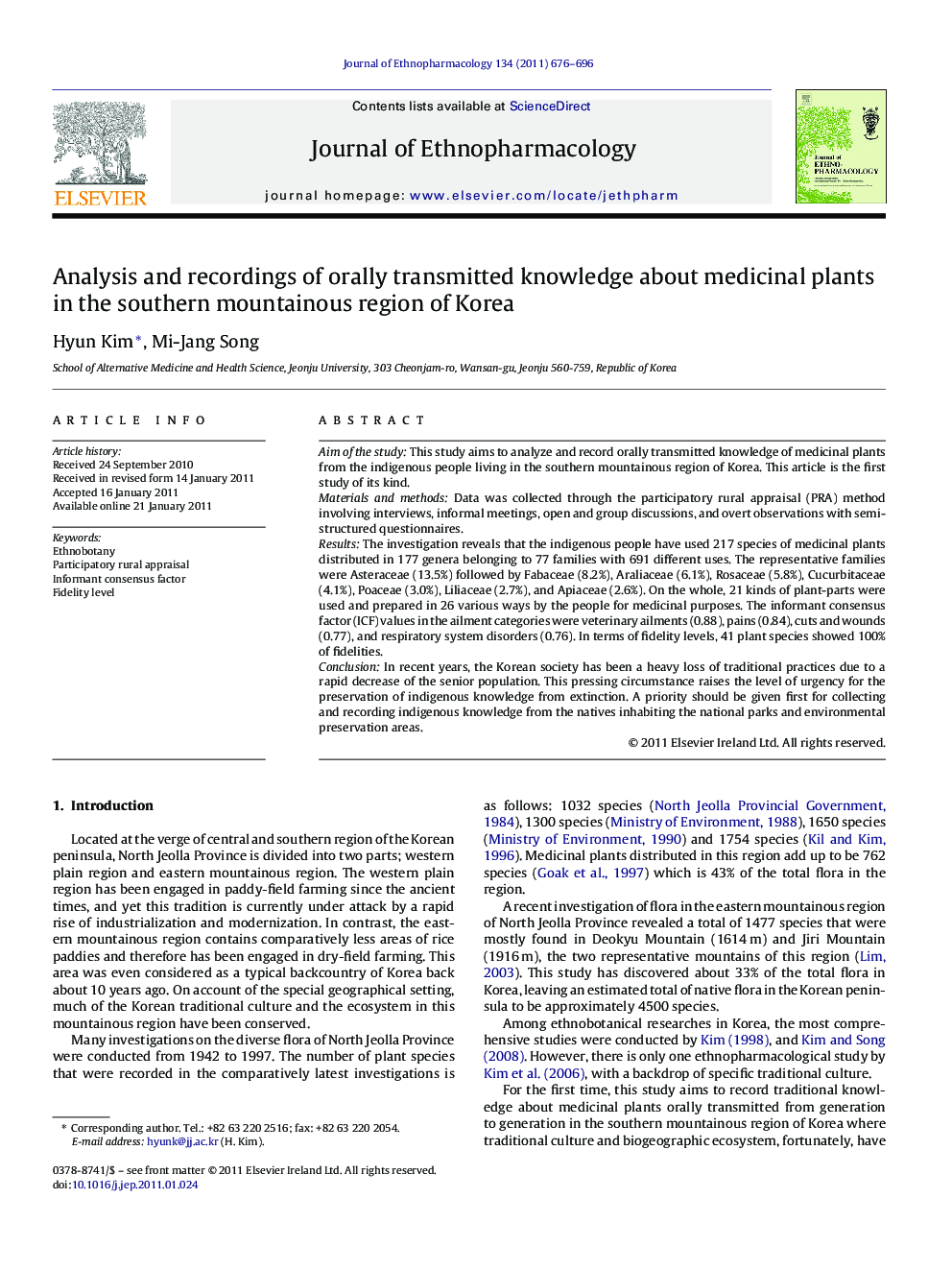| Article ID | Journal | Published Year | Pages | File Type |
|---|---|---|---|---|
| 5840226 | Journal of Ethnopharmacology | 2011 | 21 Pages |
Aim of the studyThis study aims to analyze and record orally transmitted knowledge of medicinal plants from the indigenous people living in the southern mountainous region of Korea. This article is the first study of its kind.Materials and methodsData was collected through the participatory rural appraisal (PRA) method involving interviews, informal meetings, open and group discussions, and overt observations with semi-structured questionnaires.ResultsThe investigation reveals that the indigenous people have used 217 species of medicinal plants distributed in 177 genera belonging to 77 families with 691 different uses. The representative families were Asteraceae (13.5%) followed by Fabaceae (8.2%), Araliaceae (6.1%), Rosaceae (5.8%), Cucurbitaceae (4.1%), Poaceae (3.0%), Liliaceae (2.7%), and Apiaceae (2.6%). On the whole, 21 kinds of plant-parts were used and prepared in 26 various ways by the people for medicinal purposes. The informant consensus factor (ICF) values in the ailment categories were veterinary ailments (0.88), pains (0.84), cuts and wounds (0.77), and respiratory system disorders (0.76). In terms of fidelity levels, 41 plant species showed 100% of fidelities.ConclusionIn recent years, the Korean society has been a heavy loss of traditional practices due to a rapid decrease of the senior population. This pressing circumstance raises the level of urgency for the preservation of indigenous knowledge from extinction. A priority should be given first for collecting and recording indigenous knowledge from the natives inhabiting the national parks and environmental preservation areas.
Graphical abstractDownload high-res image (231KB)Download full-size image
